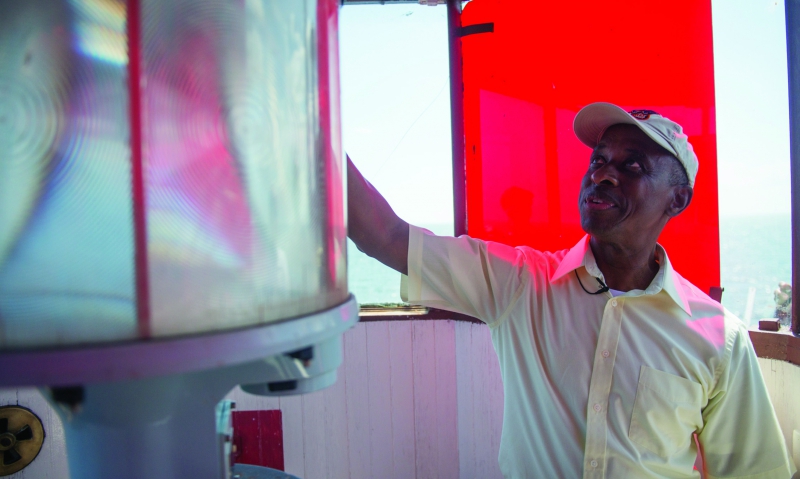
Coast Guard veteran remembers his three-year command at Thomas Point Shoal Lighthouse.
John White grew up in Charlotte, N.C., seeing signs above water fountains, one designated for “whites” and one for “colored.” He had no white classmates. During those final years of segregation in the South, he was unsure where his life would lead him.
Then White’s two older brothers were drafted into the Army for the Vietnam War. His turn came in 1969, a year after graduating high school, when he was drafted too. He decided he’d enlist, and while doing some research on the armed forces, he felt a connection to the Coast Guard.
“I heard about icebreaking, pollution response and the search-and-rescue cases,” he recalls. “I said, ‘Man, I think I would like that.’”
He failed his first entry exam but believed the Coast Guard was where God wanted him. He studied a booklet he’d checked out from the library for another 30 days, and asked the recruiter to drive 100 miles from Greensboro to Charlotte so he could retake the test. This time, he passed.
At basic training in Cape May, N.J., White learned to do what he was told, when he was told, how he was told.
“When you first arrive, you’re given a ditty bag with all your issued belongings,” he says. “We were given four towels and told to stencil one with our name on the upper-right-hand corner and to turn it over to do the second side. Being young and smart, I thought that was taking the long way, so I decided to do all four at the same time. When the company commander saw what I was doing, he said, ‘I’m going to make an example out of you.’
“He picked up all four towels and threw them into my face. It didn’t hurt me, but it did humiliate me ... He got close to my face and yelled, ‘Go over and put your nose to that glass door.’ My first thought was, ‘This guy’s prejudiced.’ The only thing that made me feel good was that within 15 seconds, a white guy came up on the opposite side of the glass door and put his nose right up against mine.”
White’s first assignment was the Coast Guard cutter Chincoteague, where he advanced to boatswain’s mate third class. After that, he was transferred to Annapolis, where he became a petty officer second class and was made officer-in-charge of the Thomas Point Shoal Lighthouse at Chesapeake Bay.
“The biggest challenge was making sure the men in my charge were doing their assigned duty the week I was off,” White says. “I needed to impress upon them how important it was to be lighthouse keepers and ensure the foghorn was operative, the beacon was working, and the light was on every night when it was supposed to be.”
He remembers the three-year assignment fondly.
“I loved seeing and meeting all the mariners who passed by the lighthouse,” he says. “They cooked meals for me and wrote me letters. That really made me feel I was doing something of importance – not only as officer-in-charge, but also as a friend of the people in the bay itself.”
Near the end of his tour, White asked for an extension so he could be part of the lighthouse’s centennial. “You can’t imagine how it made me feel to be officer-in-charge of the lighthouse as it turned 100 years old in 1976, and how proud I was to have that position as an Afro-American,” he says.
In 2015, White and his wife visited Coast Guard Station Annapolis and were offered a trip out to the lighthouse. He reminisced about the feeling of the wind and sun on his face where he’d once fished, and how he’d hung curtains so it would feel more like home. Most of all, he recalled his gratitude of having held such an important position.
Gathering members of his Coast Guard escort around him, White began to sing: “Lord, I just want to thank you ... I want to thank you for being so good to me.”
Petty Officer 2nd Class David Marin has been a public affairs specialist with the Coast Guard for 10 years.
- Honor & Remembrance

